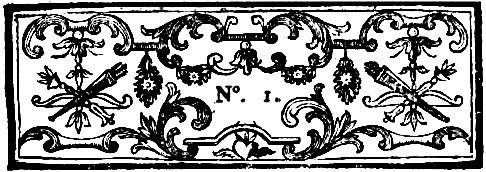GALLICA: Dictionaries
Users of Gallica may have noted that Gallica has a separate link to its dictionaries. But in fact this link is trompeuse - the site has FAR more dictionaries than listed there. A better way to see them all is to enter "DICT*" in the first search field. This brings up a few 'false positives', but mainly 12-14 pages of dictionaries (in some cases, volumes of the same work).
For lovers of the insolite, the variety to be found scrolling through these is exhilarating the usual dictionaries of argot, biography, history, architecture, arts, administration, regions, medicine, sciences, religion, languages, names, nobility, commerce, finance, languages (obscure and familiar), and literature but also of atheists:
Dictionnaire des athées, anciens et modernes... (Sylvain Maréchal)
of furniture:
Dictionnaire raisonné du mobilier français de l'époque carlovingienne à la
Renaissance
of crimes of the Revolution:
Histoire générale et impartiale des erreurs, des fautes et des crimes commis
pendant la Révolution française. Tome II, Dictionnaire (L. P.)
of failed businesses:
Dictionnaire... des faillites, séparations de biens, nominations de conseils
judiciaires... : prononcées par les tribunaux de Paris, depuis le 24 février
1848... (H.-F. Mascret)
of erotic terms:
Dictionnaire érotique moderne (par un professeur de langue verte [Alfred
Delvau])
And there is of course a dictionary of dictionaries:
Dictionnaire des dictionnaires. Lettres, sciences, arts, encyclopédie
universelle.
One of my favorites is:
Dictionnaire critique des reliques et des images miraculeuses ; précédé d'un
Essai historique sur le culte des images et des reliques, sur les troubles
élevés par les Iconoclastes, etc. (J.-A.-S. Collin de Plancy)
Though one might think such an exhaustive catalogue of relics and saints
would be compiled by a devote Catholic, in fact Collin de Plancy is best known
as a demonologist and a more typical work would be:
Dictionnaire des sciences occultes... ou Répertoire universel des êtres, des
personnages, des livres... qui tiennent aux apparitions, aux divinations Ã
la magie... ([Jacques Auguste Simon Collin de Plancy])
In listing saints, he typically says, without comment, this sort of thing:
"Left four bodies: one at Ajaccio, one at Sens, one at..:" His scholarship
seems thorough enough - when he discusses excrement as a relic, he begins by
talking of Tibet and Lamas.
This is hardly the kind of book one reads through, but it might be worth perusing the indexes - organized by Mineral, by Animal, by Vegetal, by Maladies, by Other, etc. - and delving in from there.







